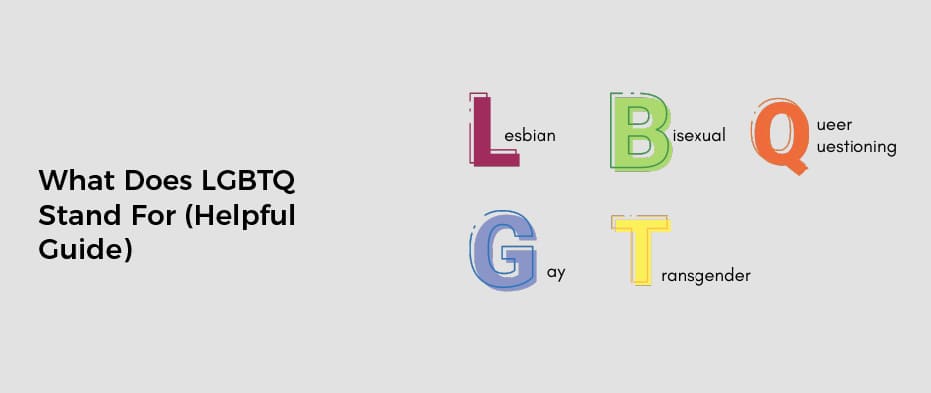
What Does LGBTQ Stand For (Helpful Guide)
Table of Contents
Generally speaking, the term LGBTQ stands for Lesbian, Gay, Bisexual, and Transgender. This term is used to refer to the wide range of gender and sexual identities that exist in our society today. It also serves as an important reminder of the diverse experiences and struggles faced by those who are part of this community. By recognizing what it means to be part of this community, we can create more understanding and acceptance for all people. This article will discuss what does LGBTQ+ stand for and its impact on creating visibility and awareness.
Orientation of LGBTQ
Orientation of LGBTQ is a term often used in the community to mean a person’s sexual identity. Sexual diversity has shaped human diversity and the types of relationships that exist in society. However, in some cases, people with sexual diversity hid their identities for health reasons.
The popularity of the term ‘orientation of LGBTQ has increased since the advent of social tolerance, but the term also has a subjective side. In a study by Toro-Alfonso and Varas-Diaz (2004), they found that people who were familiar with people of diverse sexual orientation and gender identities demonstrated a more positive attitude towards such people.
What Does LGBTQStand for
- L = Lesbian
- G = Gay
- B = Bisexual
- T = Transgender
- Q = Queer or Questioning
Despite the prevalence of heterosexism and homophobia, the LGBTQ community has fought for equality. This month, we’ll explore the LGBTQ community and the terms used to describe their sexual orientation. In addition, we’ll learn more about LGBTQ health and how to support LGBTQ children.
Lesbian, gay, bisexual, and transgender are all terms used to describe people attracted to people of the same gender. However, these terms do not fully describe the experiences of people in these groups. The terms used are dependent on the person’s gender identity.
Some people prefer to use the term “queer” to describe themselves. These people are still experimenting with their sexual orientation. Alternatively, some prefer the term “same-gender loving” to describe themselves.
Bisexuals are attracted to both men and women. However, the attraction may be conditional or insignificant. In addition, bisexual people may not be attracted to the same gender. The physical characteristics of bisexuals can vary. Some bisexuals have different chromosomes and genitalia than people of the same gender. They may also have different hormones.
Why LGBTQ+ Representation Matters
LGBTQ+ stands for lesbian, gay, bisexual, transgender, queer, and other identities. Representation of the LGBTQ+ community in media is an important way to create visibility and understanding of what it means to be part of this diverse group of people. By seeing characters that reflect their own experiences and identities on screen, LGBTQ+ viewers can feel seen and validated.
On the other hand, those unfamiliar with what it means to be part of this community can gain insight and understanding. Representation in media can also help create more awareness and foster acceptance among a wider audience.
By seeing what life is like for LGBTQ+ individuals, people can become more informed about their struggles and what steps can be taken to create a more inclusive society. In short, LGBTQ+ representation in media is important in creating understanding and acceptance for all people.
How Would You Define AFGE Pride Ally?
AFGE Pride Ally is a term used to describe an individual who actively supports the lesbian, gay, bisexual, transgender, and queer (LGBTQ+) community. An AFGE Pride Ally strives to create a safe and inclusive environment for LGBTQ+ colleagues by working to end discrimination and homophobia in the workplace.
This can be done through education and understanding, speaking up and supporting LGBTQ+ colleagues. And advocating for workplace policies that protect the rights of LGBTQ+ individuals.
Pride Allies also serve as a source of encouragement and support for those within the community who feel isolated or vulnerable.
Uses of the LGBTQ+ Acronym
The acronym LGBTQ+ is often used to refer to the lesbian, gay, bisexual, transgender, and queer communities. The + symbol acknowledges other gender and sexual identities that may not be represented in the initial acronym (such as asexuality, intersex, pansexuality, and more).
This term is typically used when discussing issues related to the LGBTQ+ community, such as representation in media, human rights, and health disparities. It can also be used when referencing organizations that advocate for the LGBTQ+ community. Or support services catered towards this population. By using this acronym, we can recognize and honor the diversity of gender and sexual identities that exist around us.
Impact of the LGBTQ+ Acronym
The acronym LGBTQ+ has had a tremendous impact on creating visibility. And understanding of the lesbian, gay, bisexual, transgender, and queer communities. This term is widely used in media and everyday conversations to discuss issues related to this population.
It serves as a reminder of the diversity within this community and helps us recognize what it means to be part of this group. The use of the acronym also helps create a sense of belonging among individuals who identify with any of these identities, and it can be used to foster solidarity and support within the LGBTQ+ community.
In short, the acronym LGBTQ+ has been crucial in fostering acceptance for this population. And raising awareness about what it means to be part of this community.
ConclusionAbout What Does LGBTQ Stand for
Even though LGBTQ does stand for bisexuality, there are different types of sexual identities. For example, an omnisexual is attracted to men and women. Another type is a bigender. This type of person experiences two gender identities at different times.
There are also intersex people. Intersex means that the body’s physical characteristics are a combination of male and female. Sometimes, these traits are not noticeable at birth. However, the physical characteristics change during puberty. Let us know in the comment box who knows the transgender person